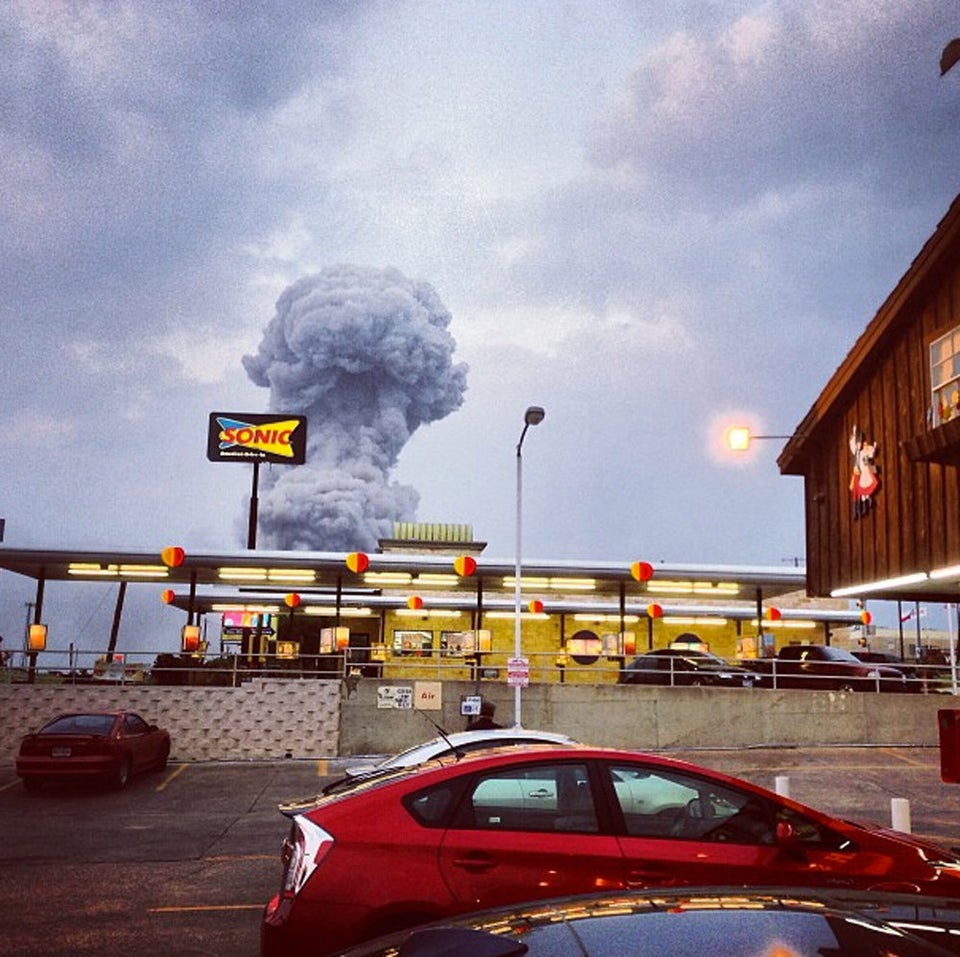WASHINGTON -- The staggering death toll continues to rise -- not in Boston, but in the small town of West, Texas.
Buried by the extraordinary developments in the marathon bombing case, the confirmed deaths of at least 14 people and the injuries of 200 more have been all but lost in the breaking terrorism news. But about 1,800 miles from Boston, rescuers and investigators are sorting through the wreckage of the devastating industrial disaster.
Officials still can't say definitively what led to the explosion at the West Fertilizer Company facility on Wednesday, which destroyed nearby neighborhoods, at least three rescue trucks and one firetruck. Occupational health experts, however, are pointing to at least one contributing factor: the inadequacy of U.S. workplace safety laws and their enforcement.
"The nation's number one resource is its workers," said Keith Wrightson, safety expert at Public Citizen, a nonprofit consumer advocacy group. "But the agency that's charged with protecting them is not given the resources to do it. I think it's worrisome for the nation."
As has been reported, the fertilizer plant hadn't been inspected by the Labor Department's Occupational Safety and Health Administration (OSHA) since 1985, when the company was fined $30. It isn't clear yet why exactly the workplace went nearly three decades without further inspections from OSHA, but none of the possibilities is encouraging.
The fertilizer facility may have been exempt from some forms of OSHA scrutiny, owing to the fact that it's a small employer. Due to a rider that has been attached by Congress to agency funding for years, OSHA can't perform certain inspections of workplaces that have 10 or fewer employees and whose industries have low injury rates. Lawmakers reason that small businesses shouldn't have to shoulder the same costs of compliance as larger ones.
As of Friday night, the Labor Department was still trying to determine whether the West Fertilizer plant actually deserved a small-business exemption. (So far, the majority of confirmed dead were firefighters and first responders, not employees.)
"Maybe that's one reason they didn't inspect -- they [may have been] prohibited from performing inspections," Peg Seminario, director of health and safety at the AFL-CIO labor federation, said of OSHA. "If they couldn't go in, that would explain why."
Safety advocates like to point out that smaller worksites aren't necessarily less dangerous worksites. In fact, small companies would have fewer resources to invest in worker safety and, due to more limited government oversight, even less incentive.
Furthermore, the average industry injury rates that can exempt a company from inspections aren't a great indicator of a workplace's likelihood for disaster, said Tom O'Connor, executive director of the National Council for Occupational Safety and Health, a federation of non-profit groups. The injury rates may not even be accurate, he added.
"This use of the average injury rates is extremely problematic, for a lot of reasons, one of which is obvious from the [Texas] plant explosion. Rates of 'routine' injuries at a facility have little or no correlation to a plant's potential for catastrophic accidents," O'Connor said in an email. "This has been seen time and again, and many safety advocates argue that using these injury rates to target inspections makes no sense for this reason.
It's still possible the company didn't deserve an exemption from routine OSHA inspections. But even if that's the case, the worksite may have enjoyed a de facto exemption thanks to the low funding devoted to OSHA and its inspections. While the agency's budget has increased modestly under the Obama administration, it still isn't adequate in the eyes of safety experts, many of whom weren't surprised at all that the fertilizer facility hadn't been inspected in 28 years.
According to the AFL-CIO, which analyzes OSHA data in its annual "Death on the Job" report, it would take the agency 137 years to inspect all the worksites in Texas with the resources it currently has.
"Even if they were ... non-exempt, OSHA has to target its inspections," explained Seminario. "They have to have a rational basis for doing this, based on injury rates or other hazards."
OSHA already has developed a targeted inspection program for chemical facilities, but the one in the Texas blast doesn't appear to have been part of it. It may not have been included in the "national emphasis program" because of the way the company apparently categorized itself with the Environmental Protection Agency. OSHA has done 549 inspections under the program since 2009, according to the Labor Department, but there are about 10,000 such facilities across the country.
Investigators have descended on West, Texas, to assess the company's role in the disaster, which raises another common gripe with workplace safety law: the relatively paltry fines that OSHA is equipped to levy. The maximum fine for a serious violation is $7,000, the same as it was in 1991.
Given the scope of the tragedy, experts assume OSHA will rack up every possible violation it can uncover, possibly pushing a tab into the millions of dollars.
"OSHA will bang them up," Wrightson said. "They're going to find every little thing they can ... The ironic thing is you never see fines [that] big unless it's got national attention."
Have a tip about the Texas explosion or other workplace dangers? Email us.

